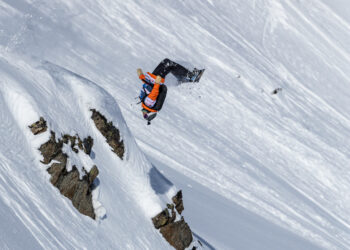By Todd Wilkinson EBS ENVIRONMENTAL COLUMNIST
There are, arguably, several kinds of part-time Greater Yellowstoneans who either own vacation homes here or visit often in order to relax and play.
There are those who simply want to escape to a wild West version of Disneyland. They arrive to get away from somewhere else, have little interest in fraternizing with the locals, pay no heed to what’s going on in our region and may view their time in the Northern Rockies as a one-way relationship—as in: “What I can experientially take from the ecosystem, to serve my own desires, without being burdened by considering how I might possibly give back.”
There are others who may interpret the region as being a province of quaint rural bumpkins. These visitors may contribute to local community charities such as the arts, local hospitals or food banks but not realize how important conservation has been in shaping the quality of the region. They ultimately fail to grasp how Greater Yellowstone is different from any other landscape.
And then there are those who educate themselves—those who possess a level of ecological literacy in understanding how the Greater Yellowstone region is, from a wildlife perspective, one of the most remarkable bioregions left on the planet.
These people (politically they can be both left and right) get involved in conservation causes. They realize the importance of being net givers rather than takers, and they don’t care if identifying as tree huggers gets them disinvited or criticized in certain circles.
Robert Aland fits into the latter. Aland is a veteran tax attorney from Chicago, who had a practice before he retired and still teaches tax law as an adjunct professor at the Northwestern University School of Law.
Aland and his wife are passionately devoted to advancing the cause of conservation for an animal that is the quintessential emblem of wildness in Greater Yellowstone: the grizzly bear.
The Alands reside part-time in Wilson, Wyoming and have been coming to Jackson Hole since the 1970s. Recently, he as an individual plaintiff joined a wide range of conservation groups, indigenous tribes, elders and others in suing the US Fish and Wildlife Service.
In particular, they successfully sought to have a US district court in Montana (a decision upheld July 8 by the Ninth Circuit Court of Appeals) overturn the Service’s decision to remove Greater Yellowstone’s grizzly population from federal protection and turn management over to the states, which hope to bring back a trophy hunt of the bears.
I asked Mr. Aland, who just turned 80-years-old, what prompted his involvement in the case personally, volunteering his time as an attorney? “Since I was a small child, I have been disgusted with the treatment of wildlife by humans. When my father took me to the Ringling Brothers Circus in my home state of Alabama, and I saw lions and tigers walking in circles in small cages or being tormented for public enjoyment and elephants walking single file with trunks grasping tails, I asked my father to take me home,” he said.
Aland added, “I believe trophy hunting is particularly disgusting. It is not a sport. A true sport involves two or more competitors, equally equipped, playing by the same rules—let the best competitor win. Sneaking up on an unsuspecting animal with a powerful weapon and killing it for fun, profit or personal validation is not a sport.”
Aland sees himself as being a kind of “defense attorney for bears that cannot speak for themselves” and he admires the non-profit law firm EarthJustice. Two summers ago, Aland, that environmental organization and other plaintiffs prevailed in convincing US District Court Judge Dana L. Christensen to halt Wyoming’s and Idaho’s plans to stage their first sport hunts of grizzlies in 44 years.
Aland is incredulous that after decades of Americans rallying to save grizzlies in Greater Yellowstone, increasing the number in the vast region from around 140 to about 720, Wyoming wanted to offer nearly two dozen up for hunters.
Aland understands how visitors to Greater Yellowstone and second home owners might want to enjoy their time here without reflecting on what’s at stake from a conservation standpoint, but he disagrees with such thinking. They ought to care, he says, because the wildlands of the region belong to them too and as citizens they need to be advocates.
Aland notes that when Yellowstone-area bears were first proposed for removal from Endangered Species Act protection in 2005, members of the public submitted 200,000 comments—a large number.
According to statistics published contemporaneously by the US Interior Department, over 99 percent of the comments, including 90 percent from residents of Montana, Wyoming and Idaho, opposed delisting.
Nonetheless, Aland says the Interior Department disregarded the expression of overwhelming public sentiment by saying it didn’t have to recognize it, as it wasn’t a formal referendum. Still, he believes that wildlife management ought to reflect the sentiments of citizens.
Shortly thereafter, a court decision overturned the government’s first bid at delisting, but four years ago the Fish and Wildlife Service and the three states tried again.
“Fast forward to 2016, when the Interior Department issued its second proposed delisting rule. This time the public filed about 665,000 comments, an even more astounding number,” Aland said. “There is no doubt that the public sentiment against delisting in 2016 was as overwhelming as in 2005, but the Interior Department, under severe political pressure to delist the bears, refused to publish the statistics as it had in 2005”
When the Ninth Circuit Court ruled in early July to uphold a lower court decision, that the Fish and Wildlife Service’s justification for delisting was based upon flawed reasoning, including failure to consider critical facts related to future survival of bears, Aland says the courts correctly considered science and the law.
Aland may reside in Chicago, but his heart is in Greater Yellowstone. Grizzlies, he adds, are a national natural treasure “to be conserved, not for the purpose of hunting them.” He knows not everyone agrees with him, but as a person who pays close attention to numbers, he insists most do.
Where public support for conservation is concerned and where the sentiment of the country is headed, these are numbers that ought to count.
Todd Wilkinson is the founder of Bozeman-based “Mountain Journal” and is a correspondent for “National Geographic.” He’s also the author of “Grizzlies of Pilgrim Creek” about famous Jackson Hole grizzly bear 399.















